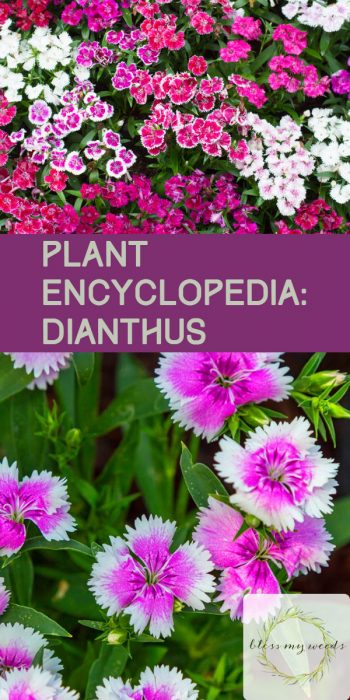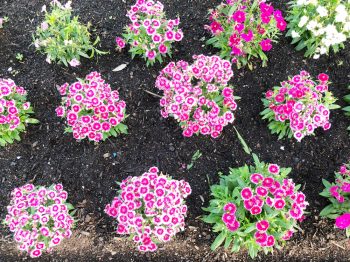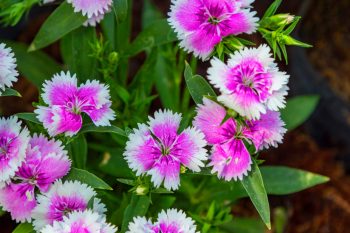

Dianthus barbatus is also known as Dianthus and Sweet William. Some gardeners know them as “pinks.” They are part of the carnation family, and produce a surprisingly spicy scent with faint notes of cinnamon or cloves. There are several varieties of the flowers available, and they include both annuals and perennials.

Sunlight Needs: Dianthus can be planted anywhere that it will get at least six hours of sunlight per day. That can include partial shade to full sun.
Watering Needs: These plants do best in good-quality, well-drained soil, and only need to be watered when they are dry. Water right at the base of the stems for best results. Fertilizer can be added to their water every 6-8 weeks for best growth.
Average Size: These plants are small, growing anywhere from 6 inches to 18 inches in height, but never more than that. Because of their small, compact size, they are routinely used for borders in gardening beds.
Foliage Color: Foliage on a Dianthus plant is a pretty lime green, which always looks striking against its variegated pink hues. These flowers are not known as “pinks” for nothing!

Must-Know Plant Care Tips: It needs to be fertilized every 6-8 weeks. If you want to make fertilizing easier, apply a slow-release fertilizer in the soil when you plant it. It tends to get mildew spotting if the foliage gets and stays wet, so be careful to water only at the base of the plant.
Plant Problem Solver: Some varieties are self-sowing. This means that it will spread itself if you are not careful. To reduce the chance of unwanted Dianthus plants popping up in your yard, deadhead the plant often. This will also encourage the plant to continue blooming.
Pretty Pairings: Plants that grow well with Dianthus are those that need similar types of growing conditions. Roses, Lamb’s Ear, Bleeding Hearts and Delphinium always grow beautifully with Dianthus. Flowers that are either brightly colored or powerfully scented may overpower your Dianthus and may not be the best choice.

Leave a Reply